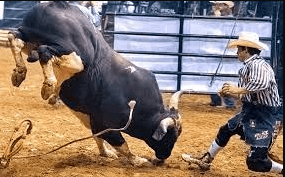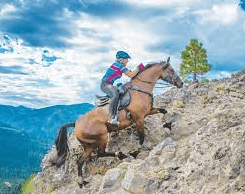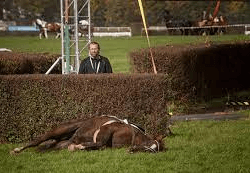How Can Pole Bending Skills Be Improved?

Pole bending is a thrilling and challenging equestrian event that requires both precision and speed. It involves navigating a series of poles arranged in a straight line, with the goal of completing the pattern as quickly as possible without knocking any poles over.
For those looking to improve their pole bending skills, it is essential to focus on mastering the basics, such as proper body positioning and effective communication with the horse. Additionally, advanced techniques, mental preparation, and competition tips can further enhance performance in this exciting sport.
Mastering the basics of pole bending is crucial for improving one’s skills in this discipline. Riders must learn to maintain a balanced position while riding through the poles, ensuring that they are centered over their horse’s back and maintaining a secure seat. This allows for better control and minimizes any disruptions to the horse’s movement.
Furthermore, riders need to establish clear communication with their horses through subtle cues and aids to guide them accurately through each pole. By developing these foundational skills, riders can lay a solid groundwork for improvement in pole bending.
In addition to mastering the basics, advanced techniques can take pole bending skills to new heights. These techniques include perfecting efficient turns around each pole by utilizing precise leg cues and weight shifts. Riders must also develop exceptional timing when urging their horses forward between poles while maintaining stability and balance throughout each maneuver.
Moreover, incorporating strategic strategies such as planning an optimal path through the poles can significantly reduce time without compromising accuracy. By diligently studying these advanced techniques and practicing them consistently, riders can enhance their overall performance in pole bending competitions.
Mastering the Basics of Pole Bending
Mastering the basics of pole bending entails perfecting the art of maneuvering a horse through a series of closely spaced poles in a swift and precise manner.
This requires riders to maintain balance and control while executing smooth transitions between each pole.
Proper body positioning plays a crucial role in achieving success in pole bending. Riders should adopt a balanced and centered position, keeping their weight evenly distributed over the horse’s back. This allows for better stability and control during turns and maneuvers.
Additionally, effective use of reins is essential in guiding the horse through the course. Riders must have a light touch on the reins, providing clear cues to communicate desired movements to the horse without causing unnecessary tension or confusion.
By mastering these fundamental aspects of pole bending, riders can enhance their skills and achieve greater precision and fluidity in their performances.
Advanced Techniques for Pole Bending
Enhancing one’s proficiency in pole bending can be achieved by adopting advanced strategies and techniques.
Advanced techniques for pole bending involve a combination of precise timing, agility, and speed.
One technique is the ‘slalom’ approach, where riders weave in and out of the poles using quick turns and changes of direction. This requires excellent balance and coordination.
Another technique is the ‘lead change,’ which involves switching leads between poles to maintain optimum speed and efficiency.
Training drills such as practicing tight circles around cones can help improve a horse’s flexibility and responsiveness to cues, enabling them to navigate through the poles with greater ease.
Additionally, incorporating exercises that focus on building strength and endurance, such as hill work or interval training, can enhance a rider’s ability to execute pole bending patterns effectively.
By honing these advanced techniques through diligent practice and training drills, individuals can elevate their skills in pole bending and achieve greater success in competitions or recreational riding activities.
Mental Preparation and Competition Tips
To excel in pole bending competitions, riders can benefit from thorough mental preparation and adherence to competition tips.
Research shows that athletes who engage in visualization techniques before competing are 17% more likely to achieve their desired performance outcomes. Visualizing success involves mentally rehearsing the entire pole bending pattern, imagining each turn and maneuver with precision and speed. This technique helps riders build confidence and familiarity with the course, increasing their ability to execute each movement flawlessly.
Additionally, dealing with nerves is a crucial aspect of mental preparation. Riders can employ various strategies such as deep breathing exercises, positive self-talk, and focusing on the process rather than the outcome. By managing their anxiety effectively, riders can maintain a clear mind and perform at their best during competitions.
Ultimately, developing strong mental skills alongside physical training is essential for pole bending success.
Frequently Asked Questions
What are the different types of poles used in pole bending competitions?
Pole bending competitions employ a variety of materials for poles, including metal and PVC. Different colored poles can enhance visual cues, aiding in precise maneuvering. These variations contribute to the exhilarating nature of pole bending.
Are there any specific exercises or drills that can help improve pole bending skills?
To enhance pole bending skills, engaging in a series of carefully designed exercises and drills can yield remarkable results. These targeted activities focus on improving agility, speed, coordination, and precision, ultimately leading to significant advancements in pole bending techniques.
How important is the horse’s breed and conformation in pole bending?
The horse’s breed and conformation play a significant role in pole bending. Certain breeds, such as Quarter Horses, are known for their agility and speed, which can be advantageous in navigating the poles quickly and efficiently. Additionally, a horse with proper conformation, including well-balanced proportions and strong musculature, can better handle the physical demands of pole bending. These traits allow for smoother turns and faster times in this event.
What are some common mistakes to avoid while navigating through the poles?
Common mistakes to avoid while navigating through the poles include improper approach, lack of balance and control, incorrect body positioning, inconsistent speed, and failure to anticipate turns. Tips for success include practicing proper technique, maintaining focus, and developing a strong partnership with your horse.
Are there any specific strategies or techniques for achieving faster times in pole bending?
Achieving faster times in pole bending requires strategies for maintaining balance and techniques for precise pole placement. By carefully controlling their horse’s speed and using subtle cues, riders can navigate the poles with precision and efficiency.
Conclusion
In conclusion, improving pole bending skills requires a solid foundation in the basics, mastery of advanced techniques, and mental preparation for competition.
By focusing on mastering the basics of pole bending, riders can develop the necessary balance and coordination to navigate the poles with precision. Advanced techniques such as proper body positioning and timing are essential for achieving faster times and smoother runs.
Additionally, mental preparation plays a crucial role in pole bending success. Riders must learn to stay focused and maintain a calm mindset while navigating through the course. Visualization exercises can help riders anticipate their movements and mentally rehearse each run before stepping into the arena. Moreover, competition tips such as staying relaxed under pressure and maintaining a positive attitude can greatly contribute to improved performance.
While some may argue that natural talent is the most important factor in pole bending success, it is important to note that practice, dedication, and attention to detail are equally significant. While natural ability may provide some advantage initially, it is through consistent training and refinement of technique that riders truly excel in this sport.
To truly improve pole bending skills, riders must commit themselves to a comprehensive approach that encompasses both physical technique and mental preparedness. By mastering the fundamentals, incorporating advanced techniques, and developing strong mental focus, riders can enhance their performance in this thrilling equestrian event. With determination and perseverance, anyone can become a skilled pole bender regardless of initial talent or experience level.





